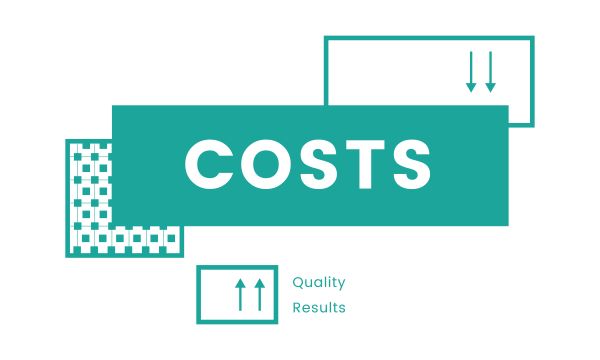If you are an entrepreneur or have a small startup. Surely you are looking to reduce your overhead costs.
The main thing that requires a small business to be able to make a profit. And to remain competitive is to cut the overhead costs down to maintain sustainability.
Let’s understand what are overhead costs.
Overhead costs are the ongoing costs of doing business, that is expenses that do not relate to the production of goods and services.
They are not just an extra but a crucial expenditure needed for the business. It is only the extra cost of a product or service which is produced for the consumers.
Examples of overhead costs:
Illustrations of fixed expenses can be payment of rent for facilities, utility bills, salaries for administrative personnel, insurance premiums, supplies, maintenance costs of the equipment, marketing expenses, and taxes. The depreciation of assets.
Meanwhile, the profits can be used to repay loans and refinancing. Or to invest in other businesses since these costs are essential to keep the business running. Rather than being associated with the production process or the creation of a product
However, the rising demand for efficiency among small companies can prompt them to use the following methodologies in the 2024 financial year. To minimize the operating outlay.
Here Are 11 Tips to Help You Reduce Your Overhead Costs Effectively

1. Evaluate and Prioritize Expenses:
First, identify each overhead cost you incur and develop a precise inventory of it.
Categorize them according to the degree of importance and deal with those that are the basis for the company either in terms of income or core activities on a priority basis.
This will enable you to establish from where there is the likelihood of your expenses to be withheld. Without being required to compromise the key functions.
How to Monitor and Review Expenses?
Monitor and review your spending consistently to identify the expenditures that might be saved. And work on where you can improve.
The proper budget and expense tracking systems should be set up to ensure each is closely monitored.
To observe inconsistencies, overspending or spikes should be made. Continuous financial analysis is a tool that gives you sound reasons to choose from different strategies or correct existing ones.
2. Leverage Technology:
Be prepared to use technology to pin down processes and avoid manual labour charges.
You can integrate your system with AI tools. Set aside a budget for software that will help streamline tedious operations like bookkeeping, payroll, inventory management, and customer relationship management (CRM).
The advent of cloud-based applications is usually attributed to less expensive solutions with capacity scalability and customization.
3. Utilize Open-Source Software:
Empirical possibilities, for example, open-source office software solutions, CRM software and project management applications, can be taken into account since they offer an alternative solution.
This will result in a notable decrease in annual software subscription fees.
4. Outsource Non-Core Functions:
For example, if your company is not an IT or accounting company. Outsourcing is an option for non-core functions like these.
Outsourcing can greatly shrink operating expenses because it means not hiring full-time employees with scarce benefits. And managing the overhead of several offices.
Not needing any full-time staff, rent functions like accounting, IT support, and marketing to agencies or freelancers who specialize in that field.
This would help save on payroll. And provide staffing flexibility by making hiring professionals easy, fast, and temporary at the same time.
Outsource Strategically:
As an alternative, seriously think of outsourcing the non-essential jobs such as accounting, social media marketing, and IT departments.
That will enable your team to have free time. It can be cost-effective when you may not hire full-time staff.
5. Negotiate with Suppliers:
Work out distribution channels with suppliers and vendors for better terms, discounts, or bulk purchase deals. Research for alternative suppliers or maybe create groups of the purchases.
And small companies to leverage the joint-buying power. Audit supplier contracts for observable cost-saving possibilities continually.
Learn to Negotiate Supplier Contracts:
Consolidate company-defined suppliers to benefit from volume discounts if possible.
6. Optimize Office Space:
If you work from a physical office space, you should try to assess and reduce the lease or rental amount.
Think of adopting hot-desking to be physically less dependent on space by situation. Which entails working from home.
Besides that, you can look into coworking spaces. Or shared offices for affordable and flexible options.
7. Energy Efficiency:
Put energy-saving measures, such as insulating buildings or changing lighting systems.
To cut down the electricity expenditure. Step up energy-efficient appliances, lighting systems, and air conditioners.
Motivate staff to habituate themselves to the use of eco-friendly methods, e.g. extinguishing lights and appliances that are not in use.
Install smart thermostats and a lighting control system to make use of intelligent energy scheduling.
8. Employee Training and Development:
Make employee training and development. As one of the most critical elements of robust employee retention programs, is imperative.
Employees who are well-educated and in control of their jobs would, for instance, be more effective than those who are not.
And would thus require less supervision which may translate into cost savings in the future. Along with that, cross-training personnel can help to fill up the job shortage. And minimize reliance on external ones.
9. Telecommunication and Travel Expenses:
The application of digital communication channels like video conferencing, instant messaging, and collaboration platforms as a replacement for travelling will help minimize travel expenses.
Still promote remote working options among employees, so that they will have fewer commuting costs. Assess the viability of business trips, especially, for virtual consults or regional trade fairs.
How to manage Telecommunication Expenses?
May you consider VoIP (Voice over Internet Protocol) for budget-friendly communication transactions?
From 120 minutes a week to 1440 minutes every day. Go to the provider for the calls and tell them you can get better rates. Consider a more affordable plan if it is necessary.
10. Inventory Management:
Initiate a practice of timely inventory management to cut down the carrying costs and prevent stock from going out of fashion.
Implement stock out and overstock monitoring systems to the supplier role to track real-time stock levels. And to avoid overstocking or putting out-of-stock situations.
How to do Inventory Management?
Apply an approach of JIT inventory management to cut down storage costs and reduce the risk of deterioration and lost sales due to obsolete products.
Combine inventory management software with stock-level control features. To make sure the good flow is not overstocked.
11. Review Insurance Policies:
Remove the old, worn and outdated ones. Try to get new ones that suit your present needs as much as possible. Explore various insurers and buy from the one that offers a competitive price.
A combo package might also help you save some cash. Make your policy flexible for the cover limits and deductibles to be revised. Which may bring better insurance costs.
Why Minimizing overhead cost is a key element of small business survival affording profitability and support?
Here are some new workplace strategies to reduce overhead costs for 2024:
- Remote Work: Terminating physical offices and migrating the software development process to a fully remote model. Where engineers may work from home and pay only for the software and the internet access. Encourage workforce communication and project management using cloud-based solutions. Utilize collaboration tools.
- Remote Meetings and Travel: Implied “curb the unessential business travelling and get the remote meetings through video conferencing platforms”. It implies that it saves your money on train tickets. And overnight stays in hotels, and you won’t have to spend so many hours at the office away from your families.
- Flexible Staffing: Adopt labor-flexible staffing strategies, such as part-time, seasonal or freelance workers. To control labour costs under fluctuating business demand. This strategy decreases the costs incurred in the provision of freebies like hospital packages and payroll tax.
- Streamline Processes: Follow up on the leads delivered immaculately to the company. And keep adding streamlining operating processes to diminish inefficiencies & trim down waste. Introduce lean methodology to improve workflows.
- Use resources effectively and reduce consumption. From the effects on public health to the potential implications for the labour market. There are numerous social consequences of automation in the workplace.
- Marketing Optimization: Allocate the marketing budget to cost-efficient digital channels like web/mobile, social media, email promotions, and content marketing. Closely watch the ROI and then put additional funding into the strategies that are the most successful.
- Renegotiate Lease Agreements: If contracting for office space or equipment. Options of rereading lease agreements to avail favourable deals. Or alternatives that could be more affordable should be explored.
- Rent and Utilities: Rework your leasing agreements, or, if it is possible in your business, downsize. The best solution may be to set up only a part of the office for the staff to come in and allow the rest of the team to work remotely. Visiting co-working spaces is a great alternative, especially when you need more flexibility. Introduce energy-saving hardware in the plant like LED lighting and programmable thermostats to reduce utility bills.
- Subscriptions and Services: Routinely audit your subscriptions of software, office supplies, etc. for what is beneficial to your operation. The cancelation of unnecessary subscriptions as well as the negotiations of better rates with existing vendors save the organization some money.
- Be Resourceful: Go Paperless: Cloud storage and digital document management are useful in reducing not only the bulk but also the costs of paper storage.
Conclusion
Hopefully, after reading this guide, now you get an idea of how to reduce your overhead costs. If you apply these strategies practically, you will get the result as soon as possible!
By implementing these strategies, small businesses can effectively reduce overhead costs. And improve their business financial health in 2024. Regularly reassessing expenses and seeking innovative solutions will help businesses stay agile and competitive in a dynamic marketplace.

